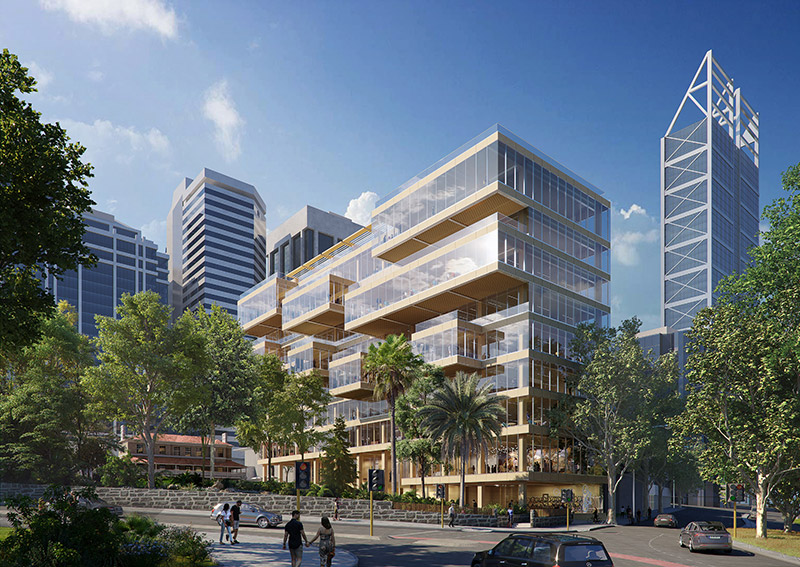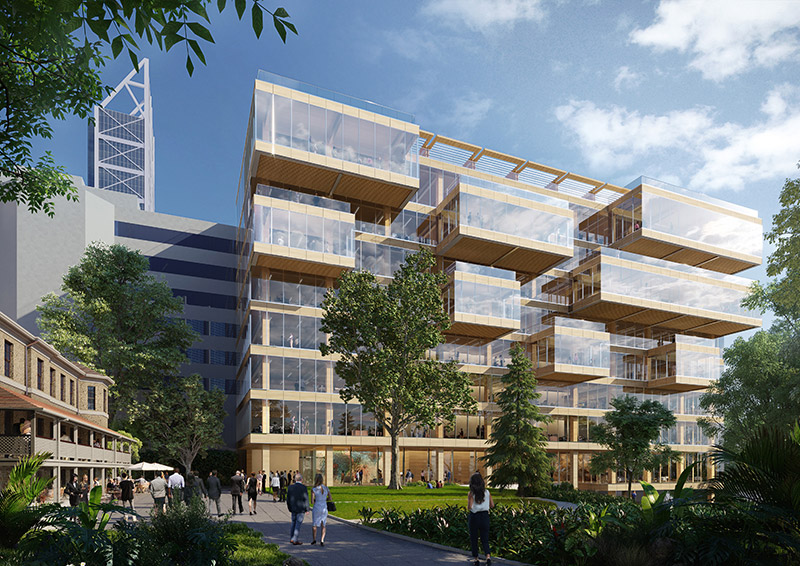Real estate innovation to cut carbon
Builders are turning to alternative construction materials to alleviate the massive carbon footprint being left by traditional structural constituents.
Embodied carbon is responsible for around 10 per cent of global greenhouse gas emissions, and each year more than 6 billion square metres of buildings are constructed using carbon intensive materials such as glass, iron, steel and concrete.
Unlike operational carbon, which can be reduced through energy efficiency measures and using more renewables, embodied carbon is locked into buildings. The World Green Building Council estimates it will account for half of the entire carbon footprint of new construction between now and 2050.
“There is increasing recognition that we need to address embodied carbon if buildings are to reach true net zero,” said JLL’s Head of ESS Australia, Work Dynamics, Riccardo Rizzi.
“This can be achieved through a move to alternative building materials, coupled with new technology and software.”
Building materials ahead of the pack
As the choice of low-carbon materials widens, engineers are increasingly experimenting with cleaner alternatives.
Smart materials such as self-healing concrete, which could mitigate extensive repairs, or climate-adaptive smart glass, which changes opacity to control the level of light and heat passing through, are being tested.
The development of next generation materials is also taking shape with graphene, made of a single layer of tightly packed carbon atoms 100 times stronger than steel that can strengthen traditional concrete. With less concrete required in the construction process, carbon emissions can be reduced.
‘Martian’ concrete uses sulphur instead of water to make it more resistant to corrosion, helping buildings to stay in prime condition longer.
“There’s a learning curve for developers around materials with lower or no embodied carbon but there are new products and technologies that can help reduce carbon with no added cost," Mr Rizzi said.
New ways of building
More innovative construction techniques are gaining traction. Modular construction, which uses 67 percent less energy compared with traditional methods, allows buildings to be easily adapted throughout their lifecycle while also improving their energy efficiency. With construction taking place offsite, deliveries to site can be cut by up to 90 percent, reducing emissions.
3D printing is also evolving at pace, with the focus not only on creating net zero energy homes but also using non-concrete based systems to do so. This new technology is becoming increasingly competitive and will drive costs down according to Mr Rizzi.
“With return on investment being achieved quicker than before, developers’ environmental, social, and governance (ESG) strategies can align with investment and consumer desires.”
Staying accountable
Building design and maintenance technology is becoming more sophisticated, making it easier to monitor and report carbon emissions for the duration of the project, from construction to the day-to-day operations.
Software platforms are now available that allow designers to adjust layouts and materials to select the lowest carbon options. Models can be used to simulate full-life carbon performance prior to even being built.
“It’s crucial to allow end users to understand where they are on their sustainable journey and this is allowing users to understand the impact that optimising their buildings can have on their carbon footprint.”
New databases, such as the EC3 Calculator, an open, free database of building materials launched by Building Transparency, are helping. By showing what a product is made of and its environmental impact, developers and architects can better compare materials and make eco-conscious choices.
Green timber
Over in the West, a new sustainable timber building has been designed to complement the heritage site it sits on.
Sitting within the Bishops See heritage precinct in Perth, the boutique 10-storey building by Brookfield Properties and Hawaiian is set to become a showcase in the portfolio. Sustainability in design continues to be a key focus not just for Brookfield Properties but developers and builders in general.
From a sustainability perspective, a 5.5 Star NABERS rating, 6 Star Green Star rating and IWBI WELL Gold Core rating are being targeted. In addition to being aesthetically attractive, the building will set a new standard for office space in Perth, with many services expected to be in advance of the PCA Premium Grade requirements.
Brookfield Properties Regional Director, Development & Property Nicholas Ozich, said the construction methodology uses a lower embodied carbon output than typical construction methods, providing greater efficiencies with less waste and a reduction in the construction period through off-site fabrication.
“The building complements the garden setting by extending the workplace experience into the garden itself and the lobby is treated as an extension of the garden landscape with a blurred distinction between inside and out.”
Donaldson Boshard Architecture Studio Director, Grant Boshard, said the great opportunity here was to create a building that integrates with and complements the garden setting.
"The building is literally made out of trees, the natural materiality of the timber structure helps to nestle it into the garden and the articulation of the facade elements brings a human scale, extending the workplace experience into the garden itself.”


Key trends
This year will continue to see people working from home, low office occupancy rates and variants of Coronavirus in the community.
Mitch Wilson, Head of Project & Development Services at Cushman Wakefield Australia & New Zealand, said there is continued downward pressure from clients to reduce property costs while also attracting staff back to the office with safe, hybrid environments.
“There will be considerable movement across the office/fit out sector as businesses look to optimise their property portfolios to drive positive change and take advantage of landlord incentives in buildings that offer extra benefits to both business and staff.”
According to Cushman & Wakefield, the three key office fit out trends for 2022 will be:
- Planning for permanent hybrid
With industries in various stages of returning to the office flexible working practices have become the norm. Collaborative work spaces as well as specific ‘focused work’ areas are being adopted, as well as providing options to split the working environment from home and the traditional office.
“There is a growing interest in understanding how to engineer an ideal hybrid ecosystem - how much space is needed, what this space should look like, how much it will cost to fit it out, and also meet the ever-growing design demands of the flexible workforce.” - Designing for experience
Employers are investigating how to embrace greater flexibility while also maintaining corporate culture and equity of employee experience and are increasingly preferring quality over quantity of space. High quality buildings with exemplary health and wellbeing credentials are mandatory, as is the need for seamlessly integrated technology solutions for both onsite and offsite working. The application of thoughtful design and fit-out standards is crucial in order to reflect the role and purpose of the office, which is all about experience, engagement, collaboration, culture and wellbeing. - Incorporating ESG
Occupiers are increasingly seeking green and wellness certifications for their projects and engaging consultants early in the design process. Project managers play a pivotal role by exposing clients to the latest workplace design strategies and assisting the integration of ESG principles into their workplace.
“We expect to see further advances in office fit-outs that promote a healthy workplace and provide a strong platform that contributes to business success. There is no one-size fits-all solution here but the data continues to reinforce the importance of the office in the workplace ecosystem and the need to allow employee freedom of choice in their workplace location. Project managers have an important role to play in providing an environmentally sensitive end-to-end solution.” Mr Gibson said.



















